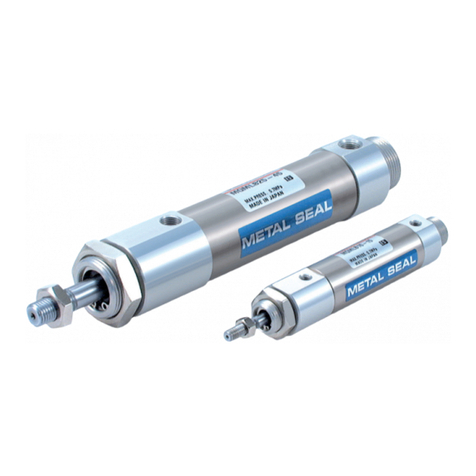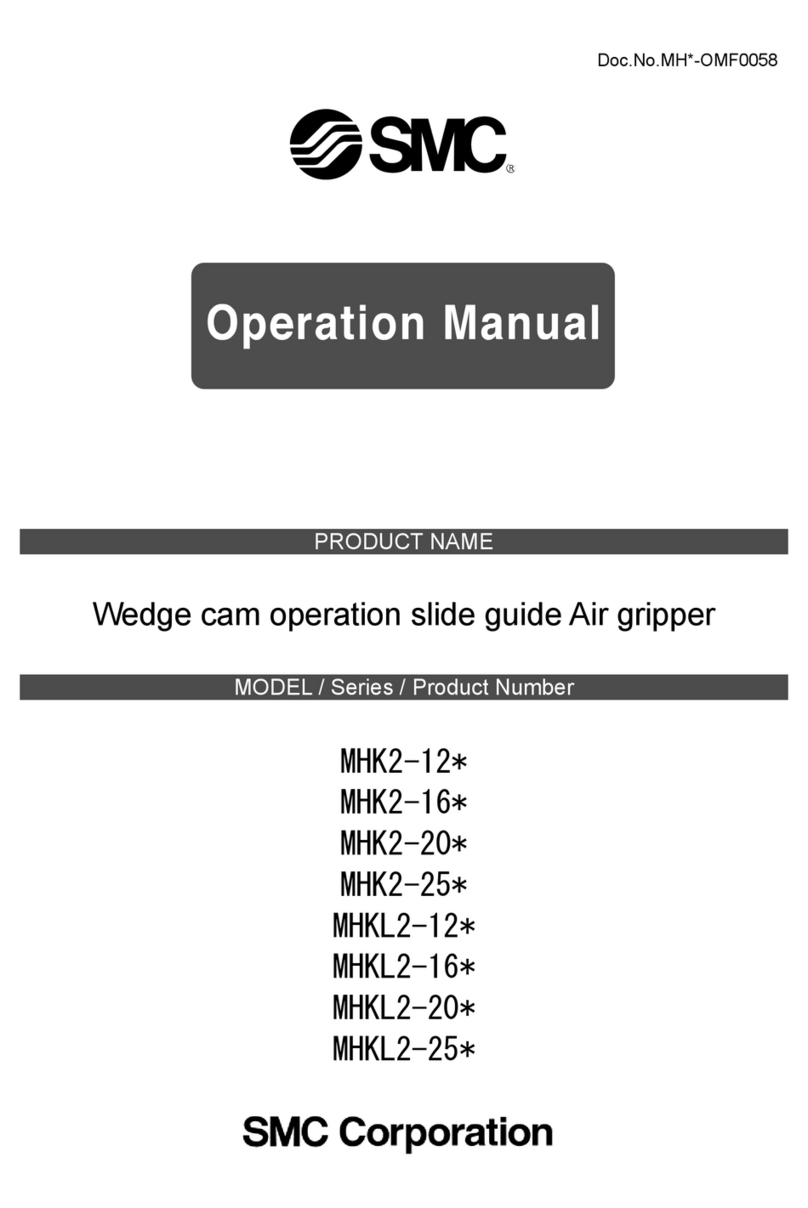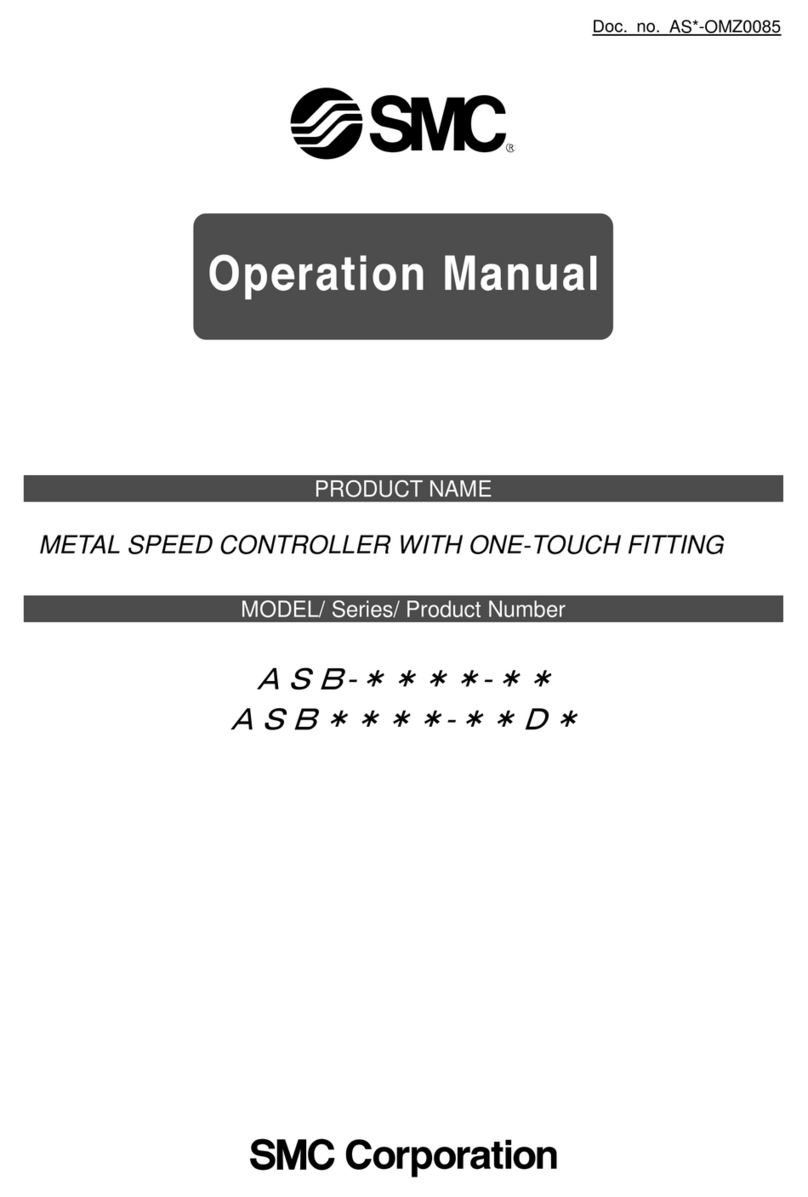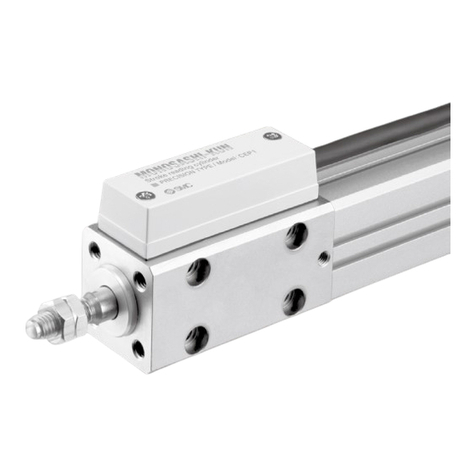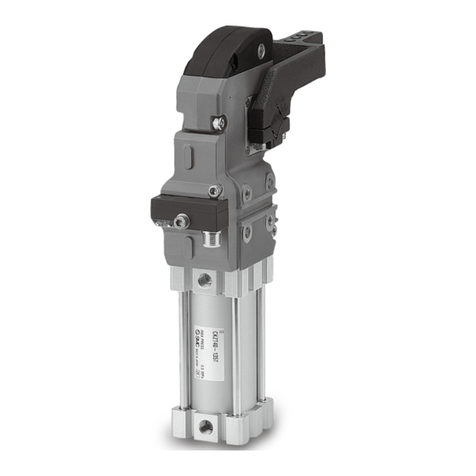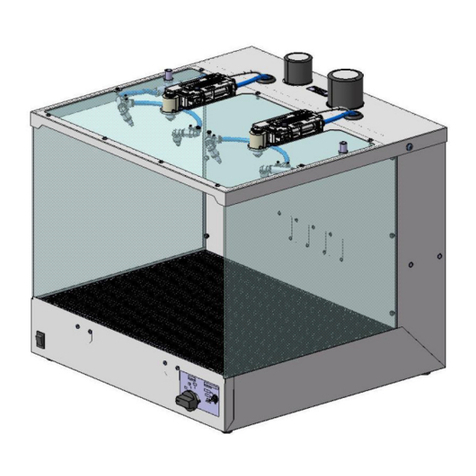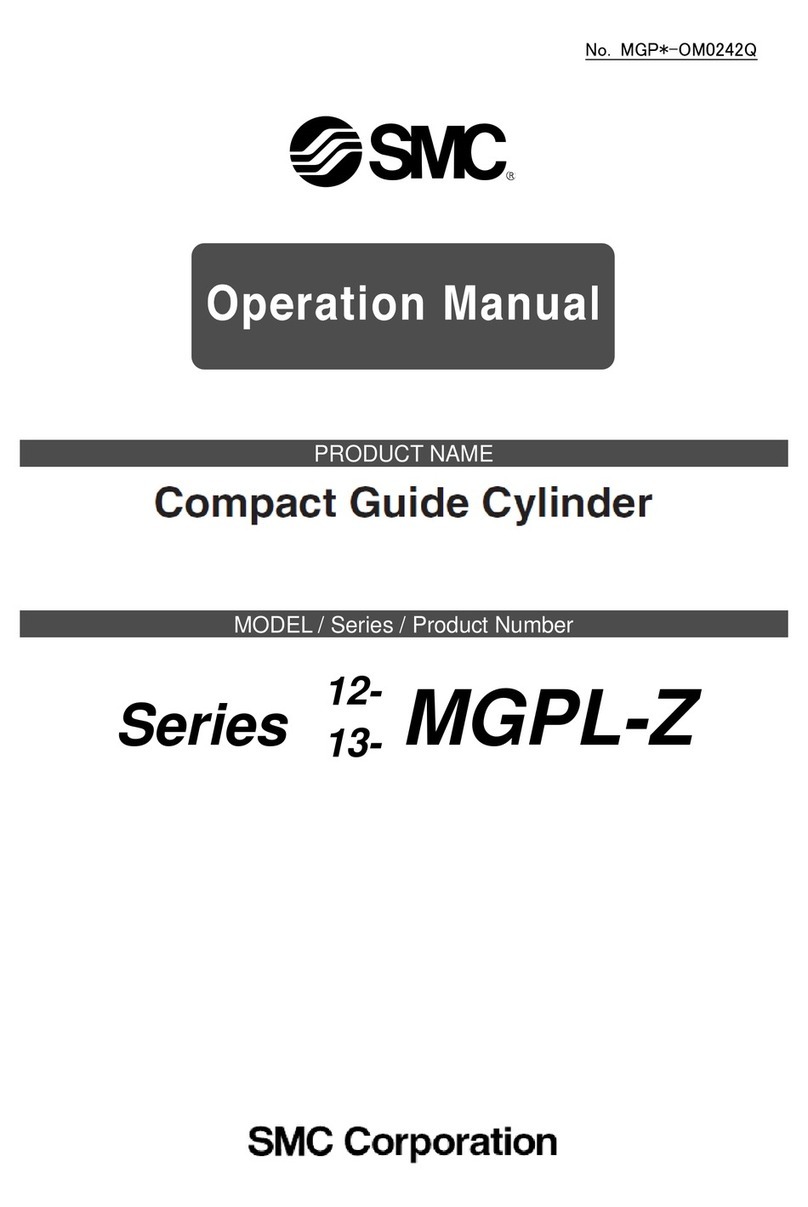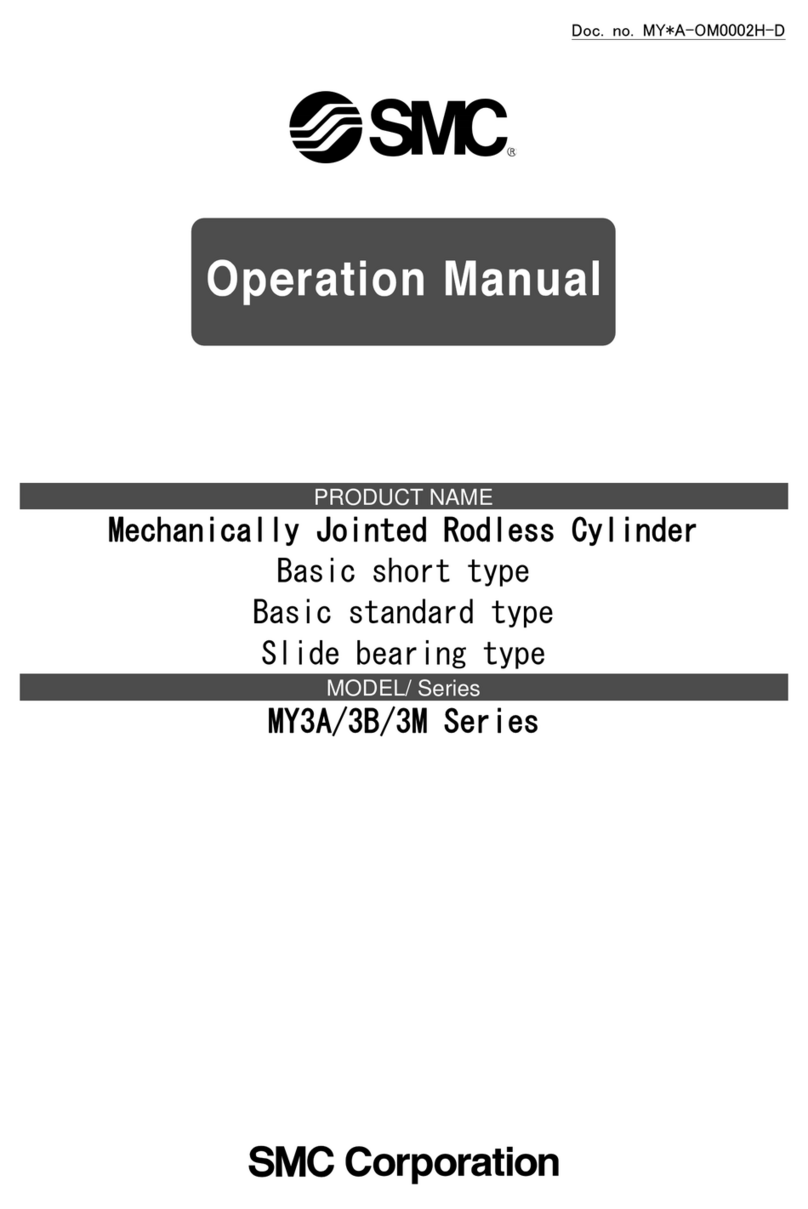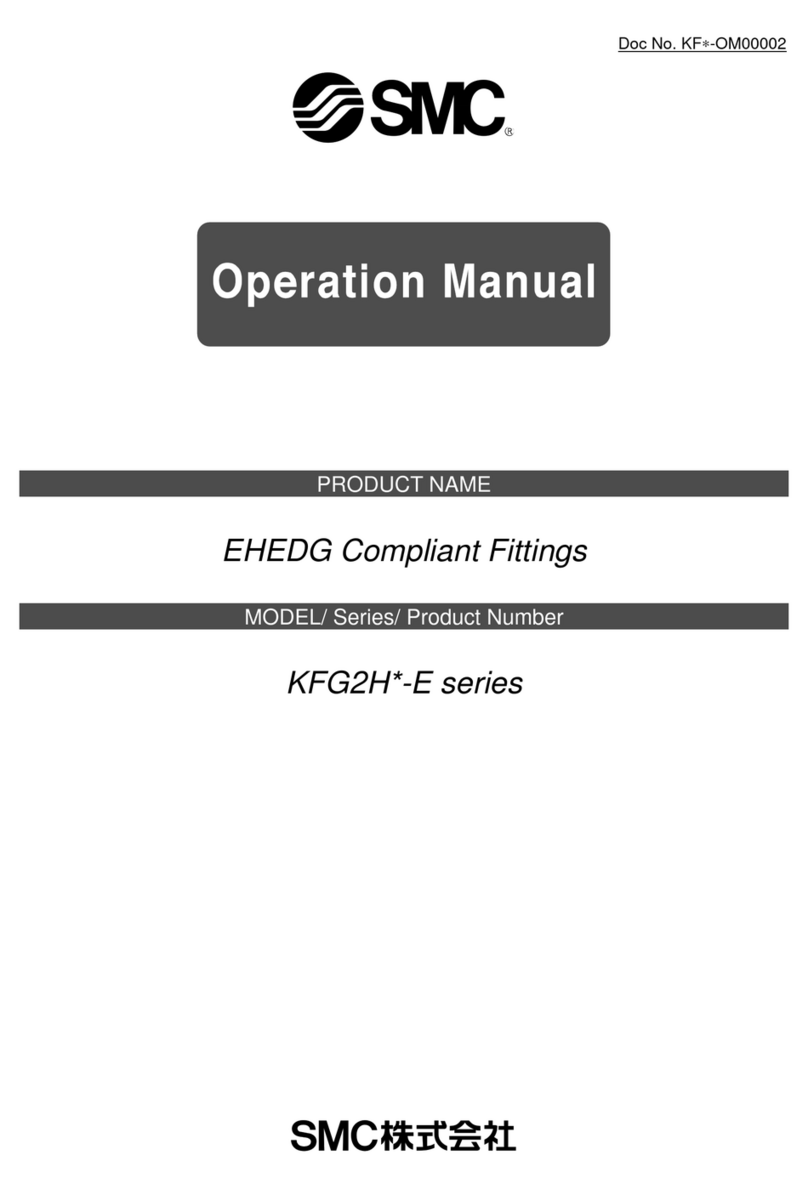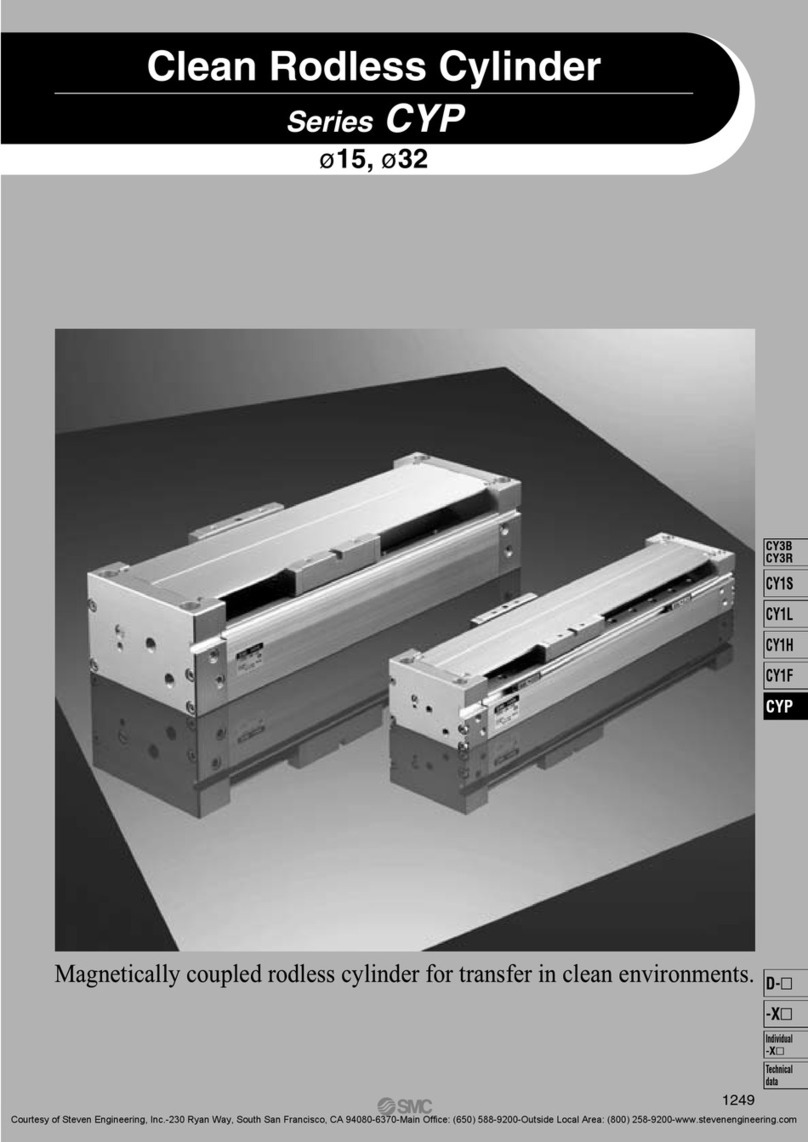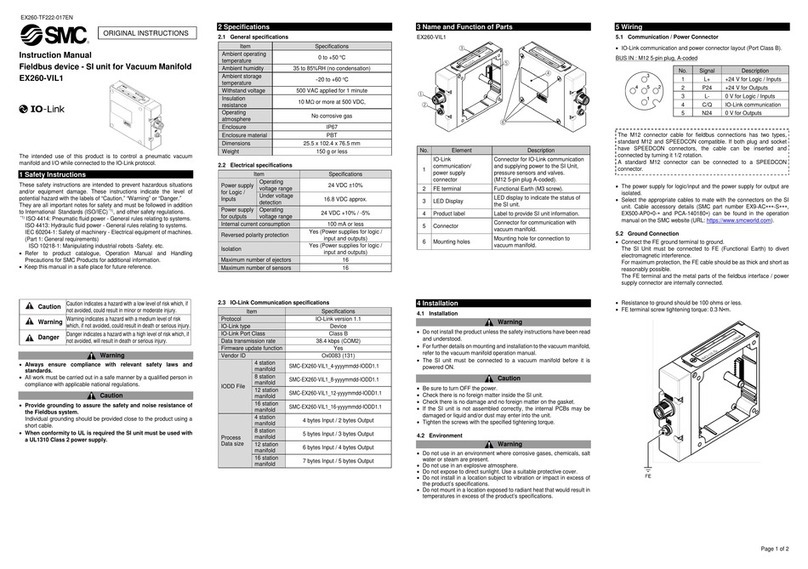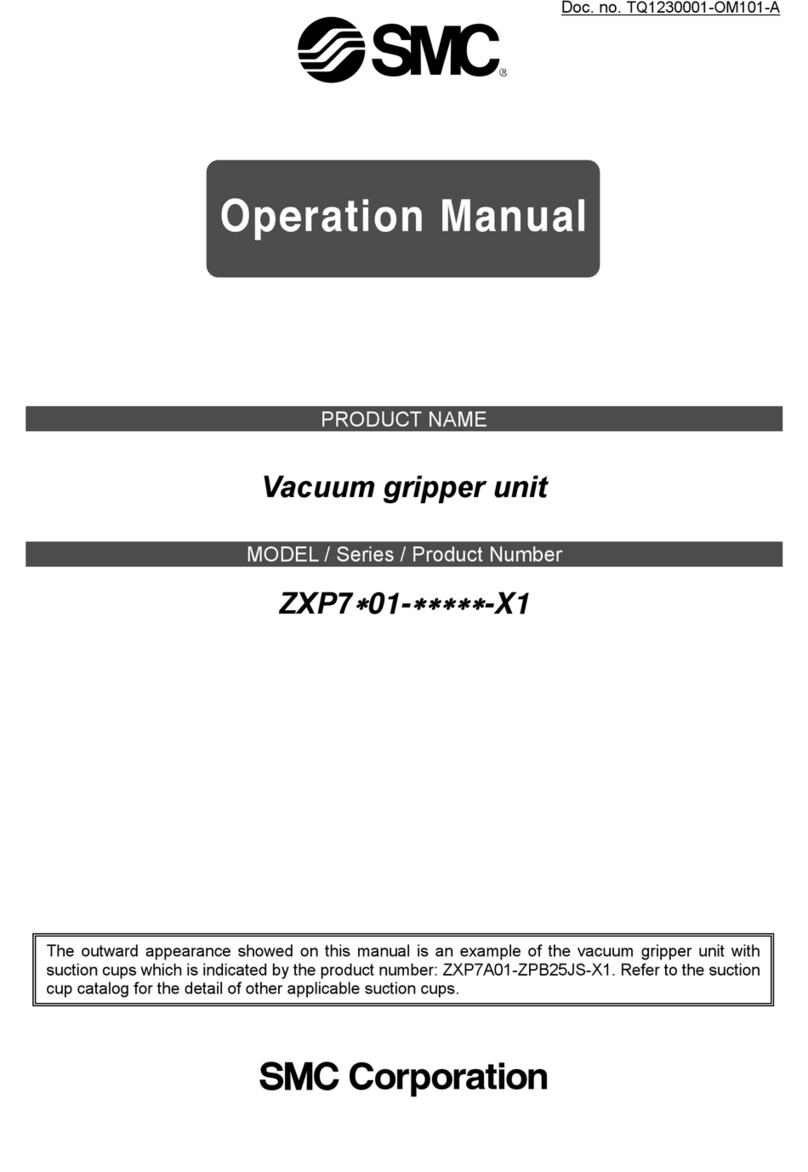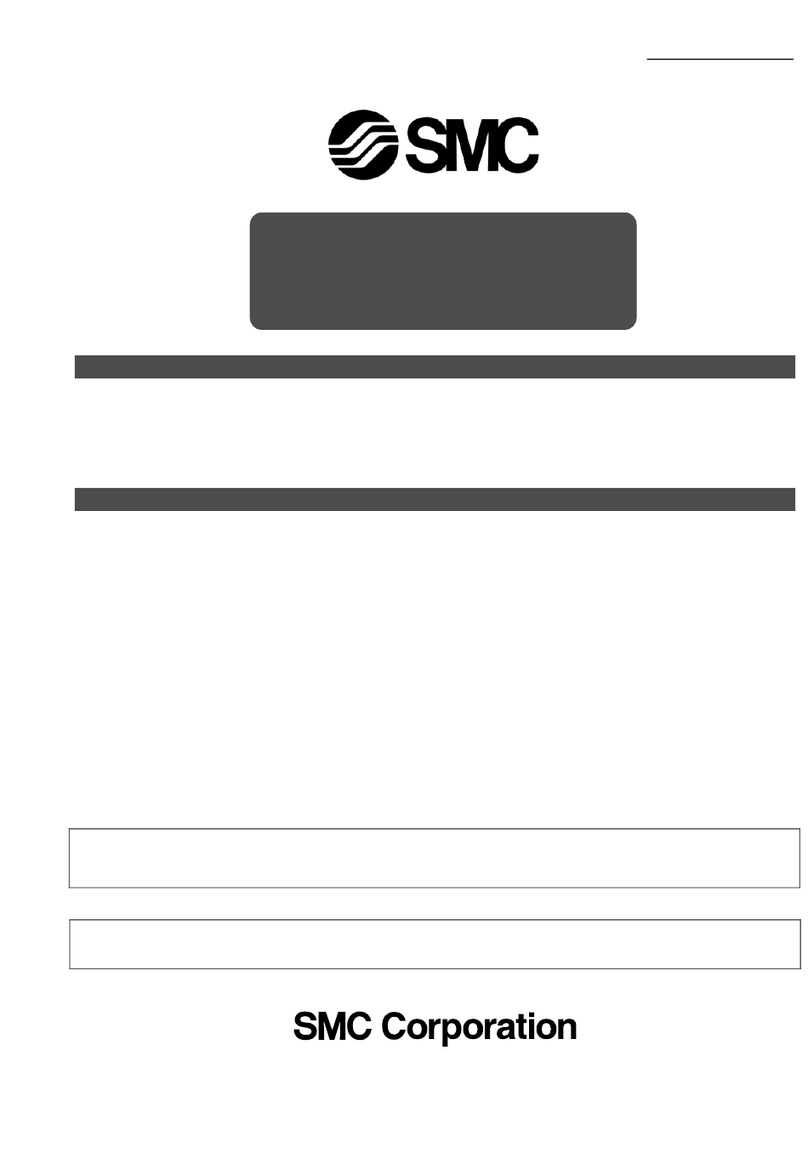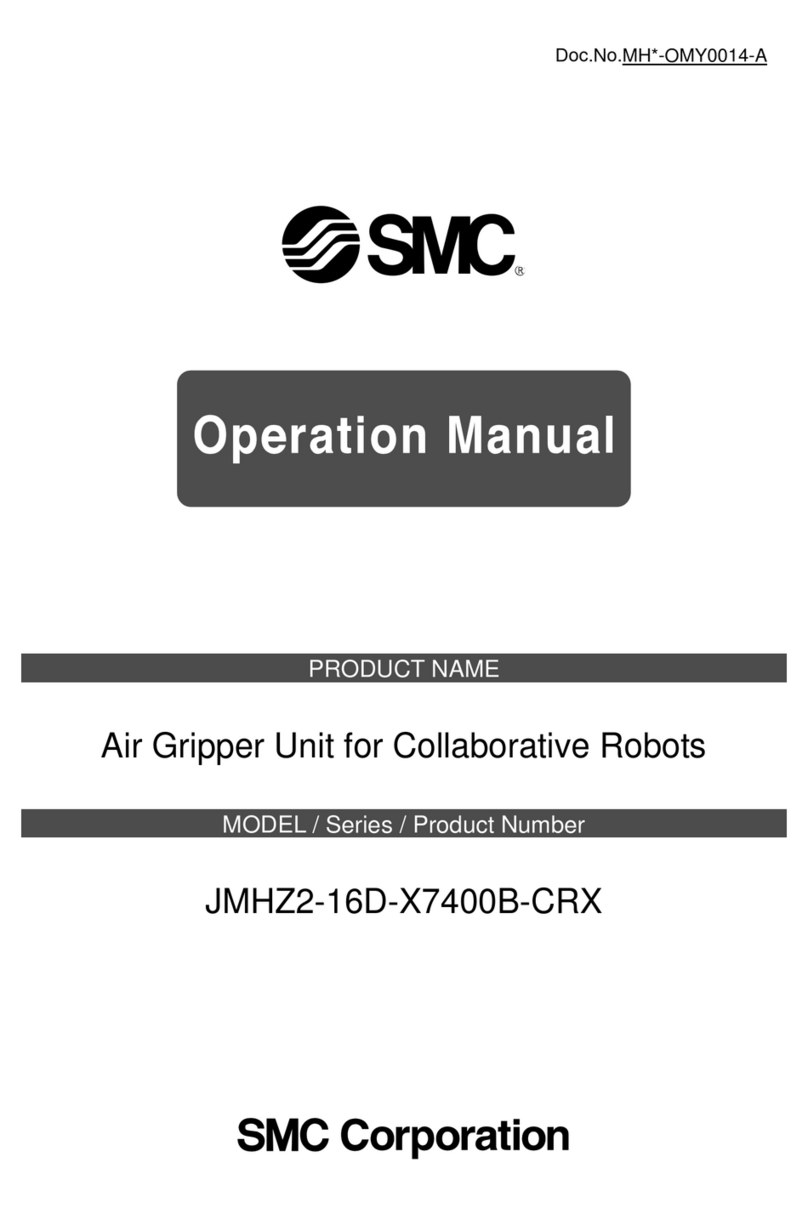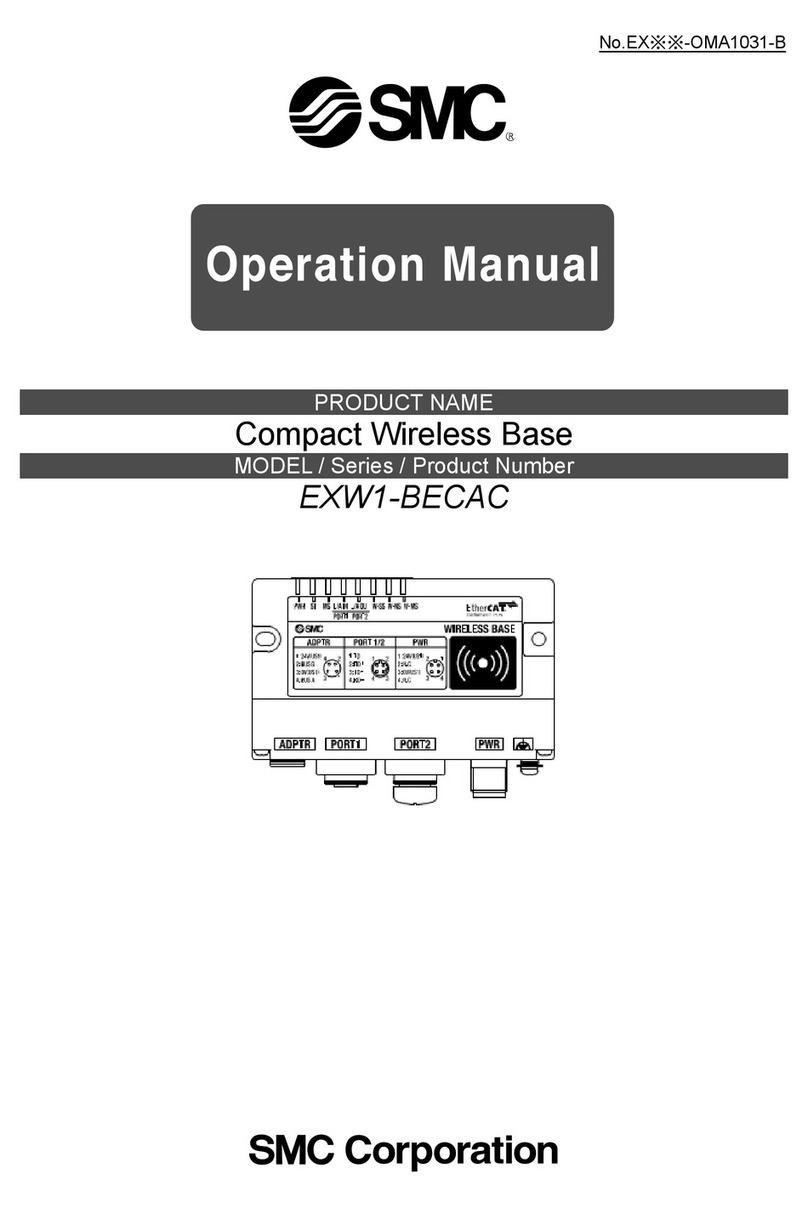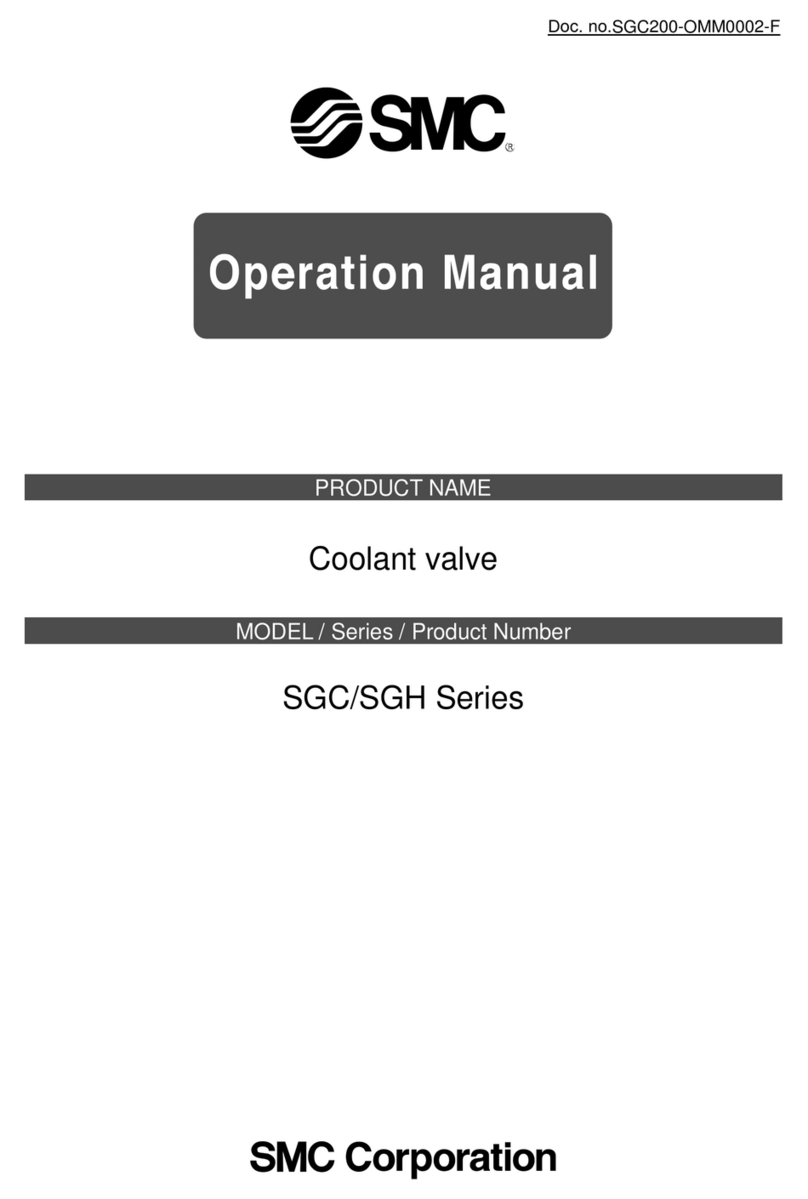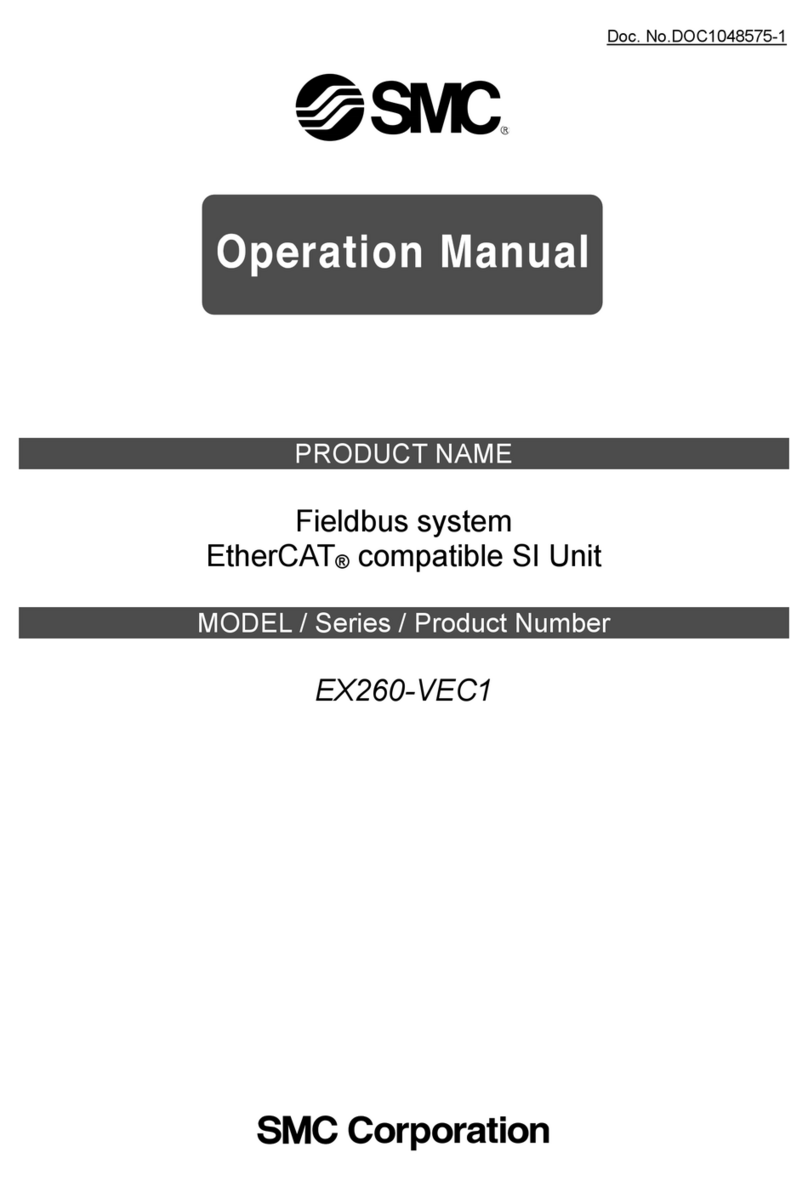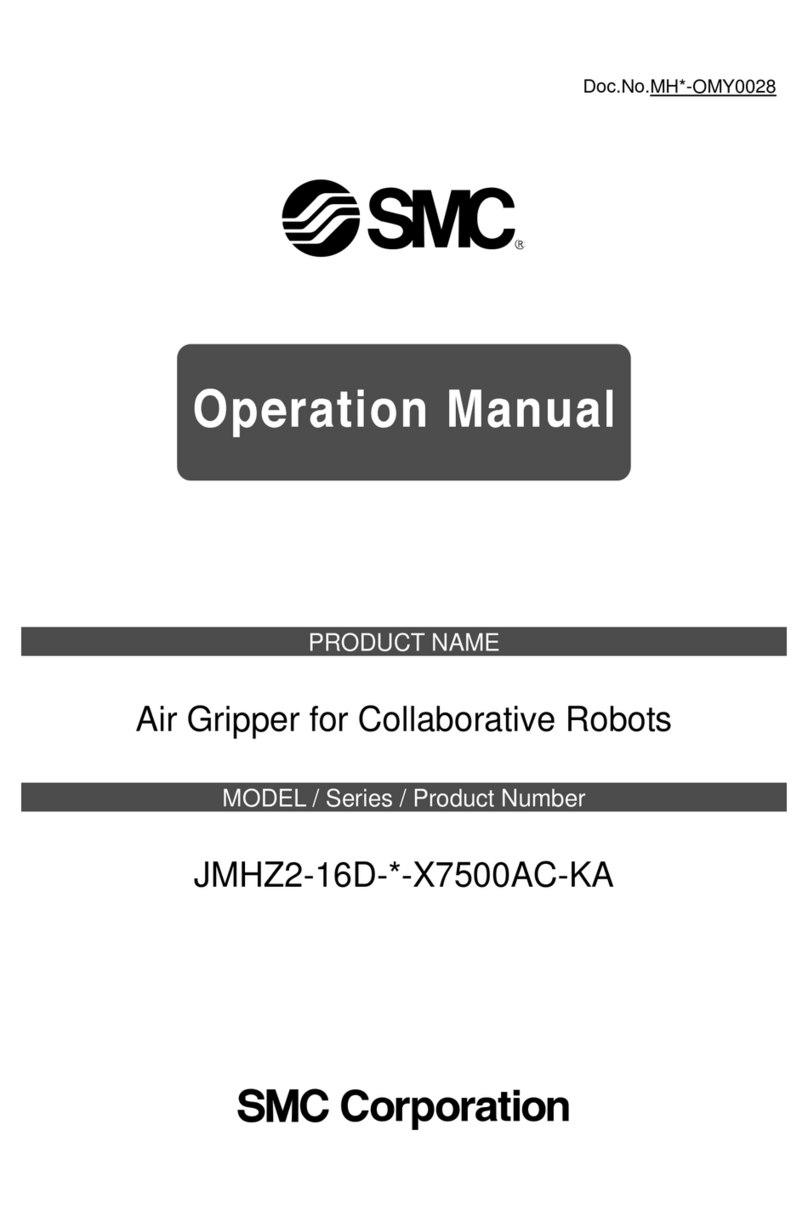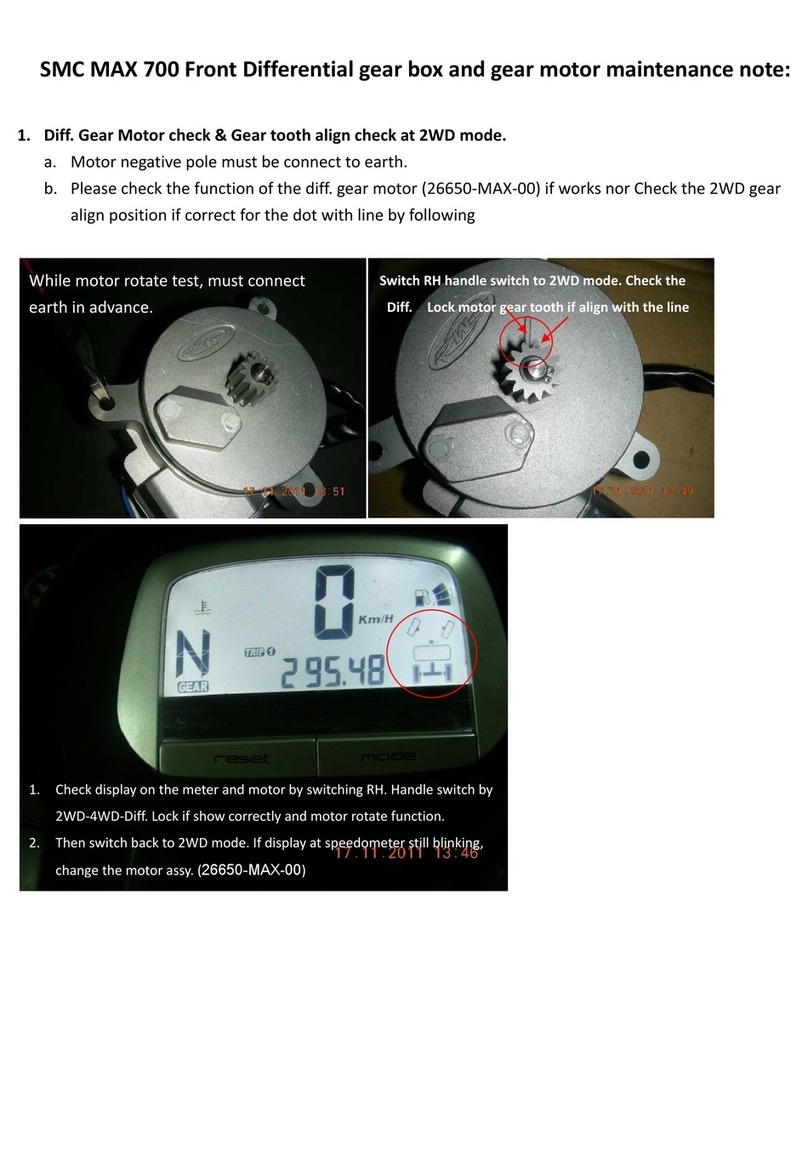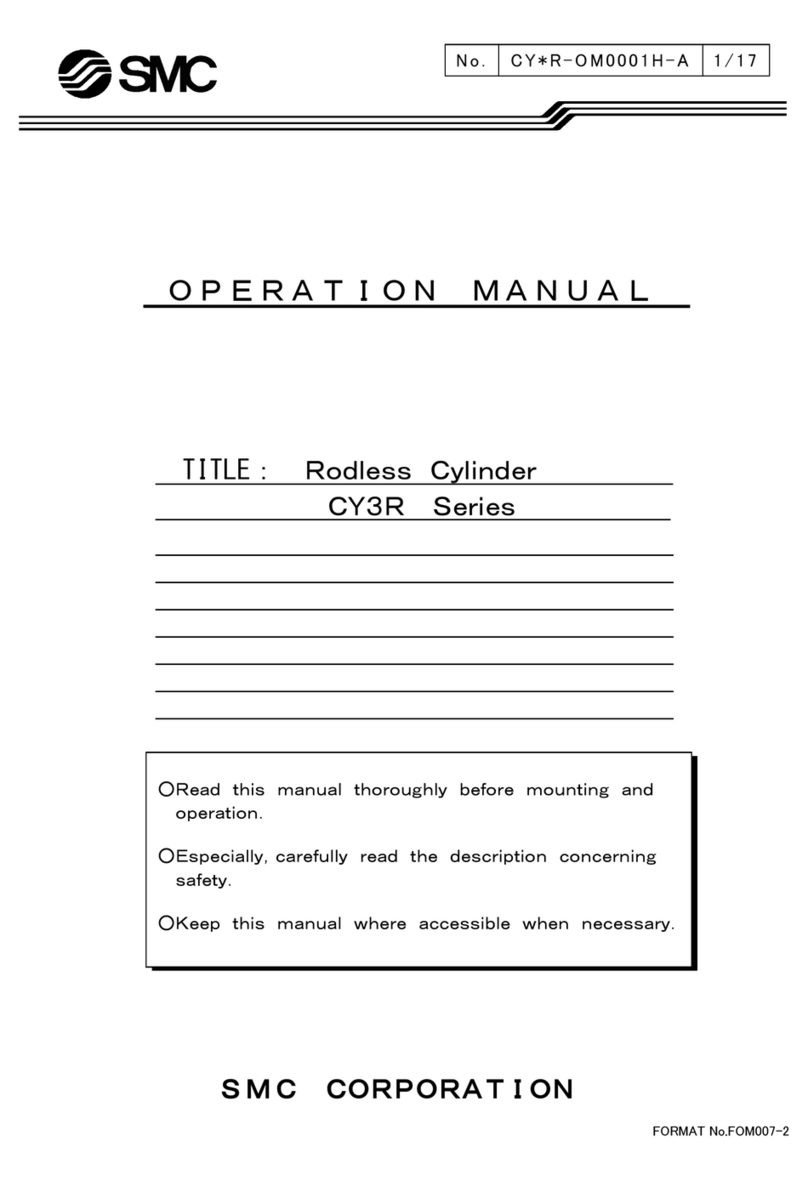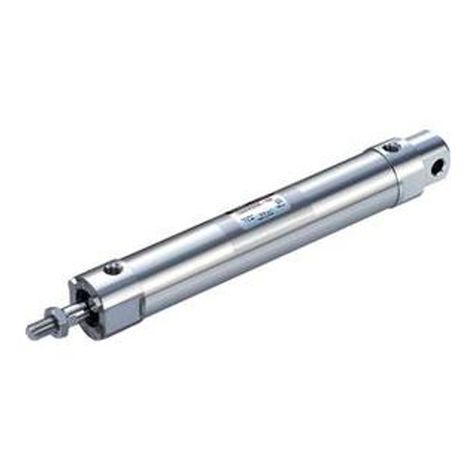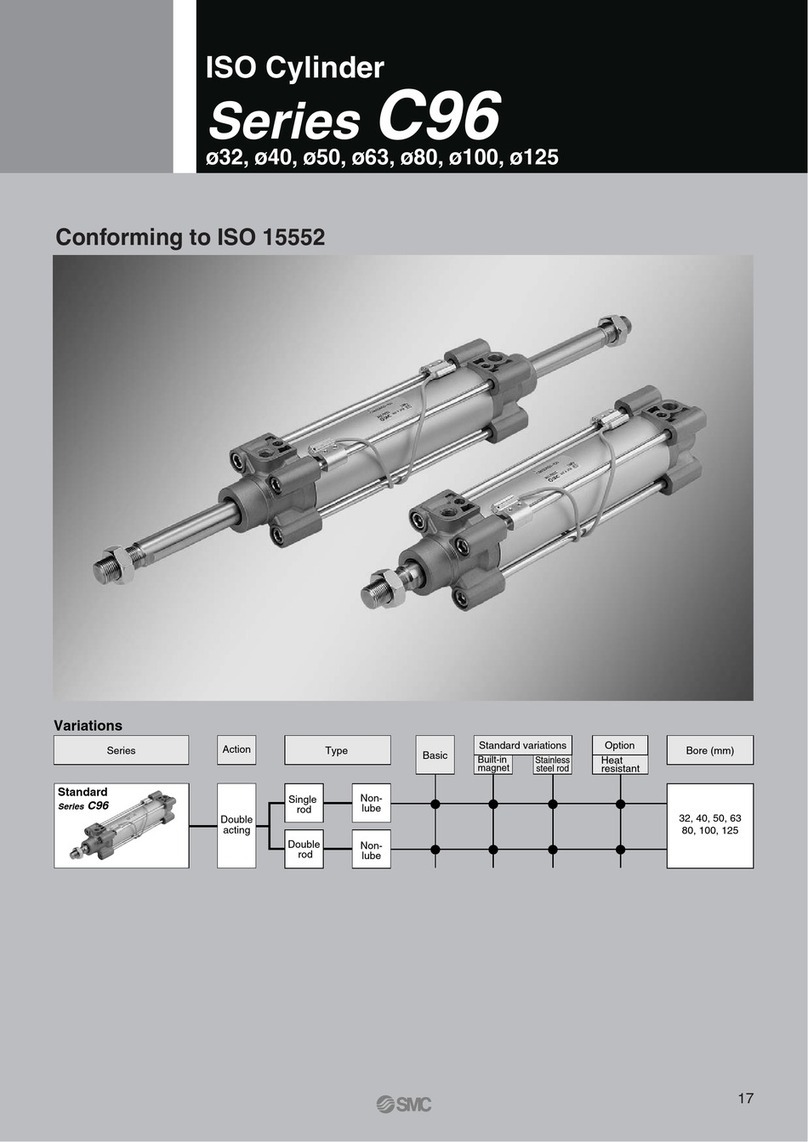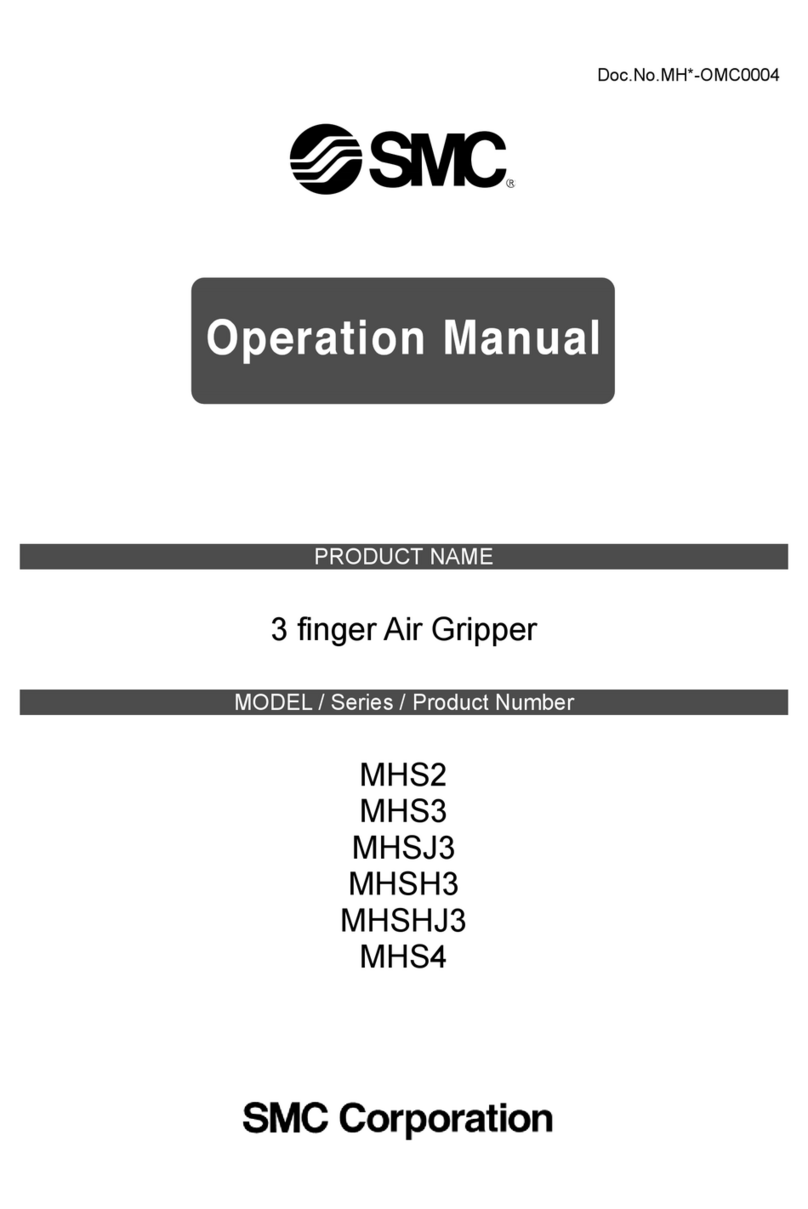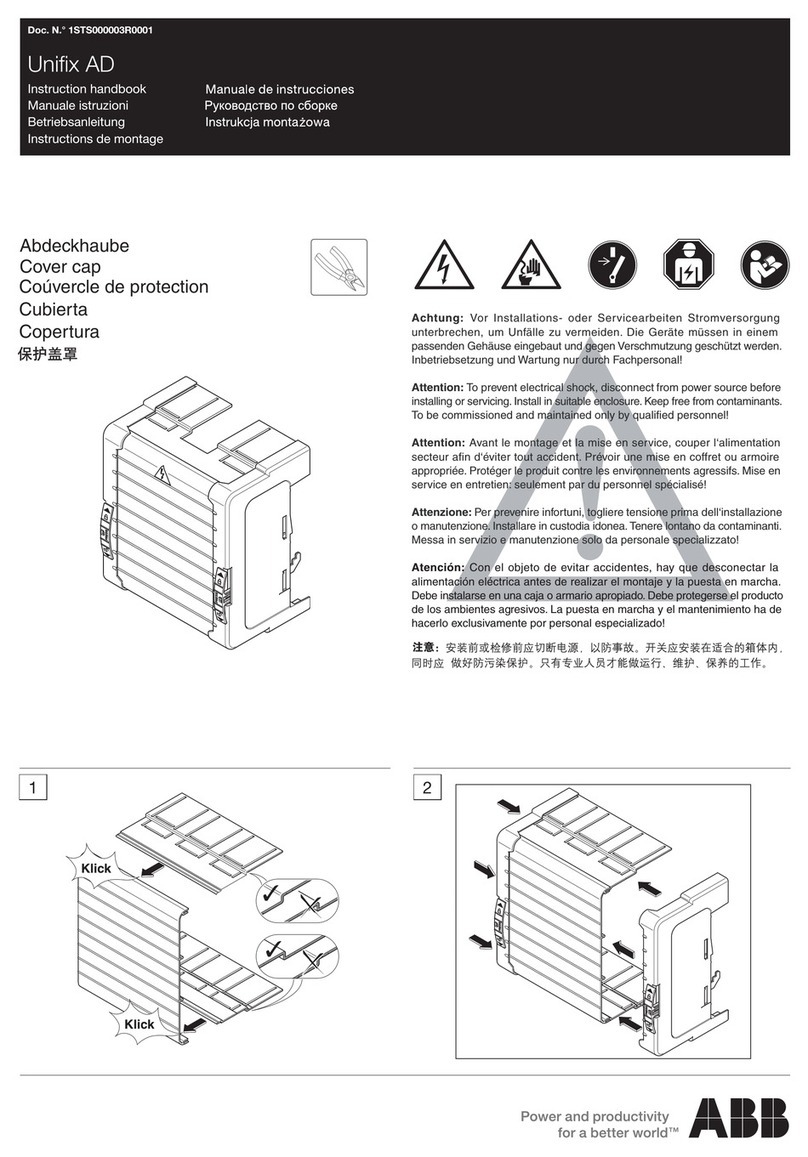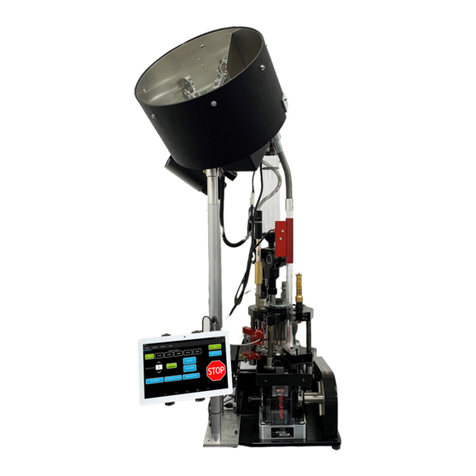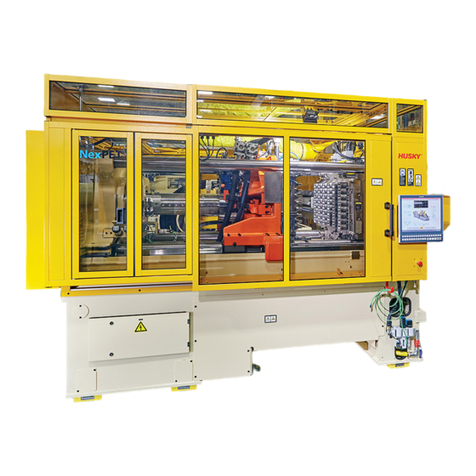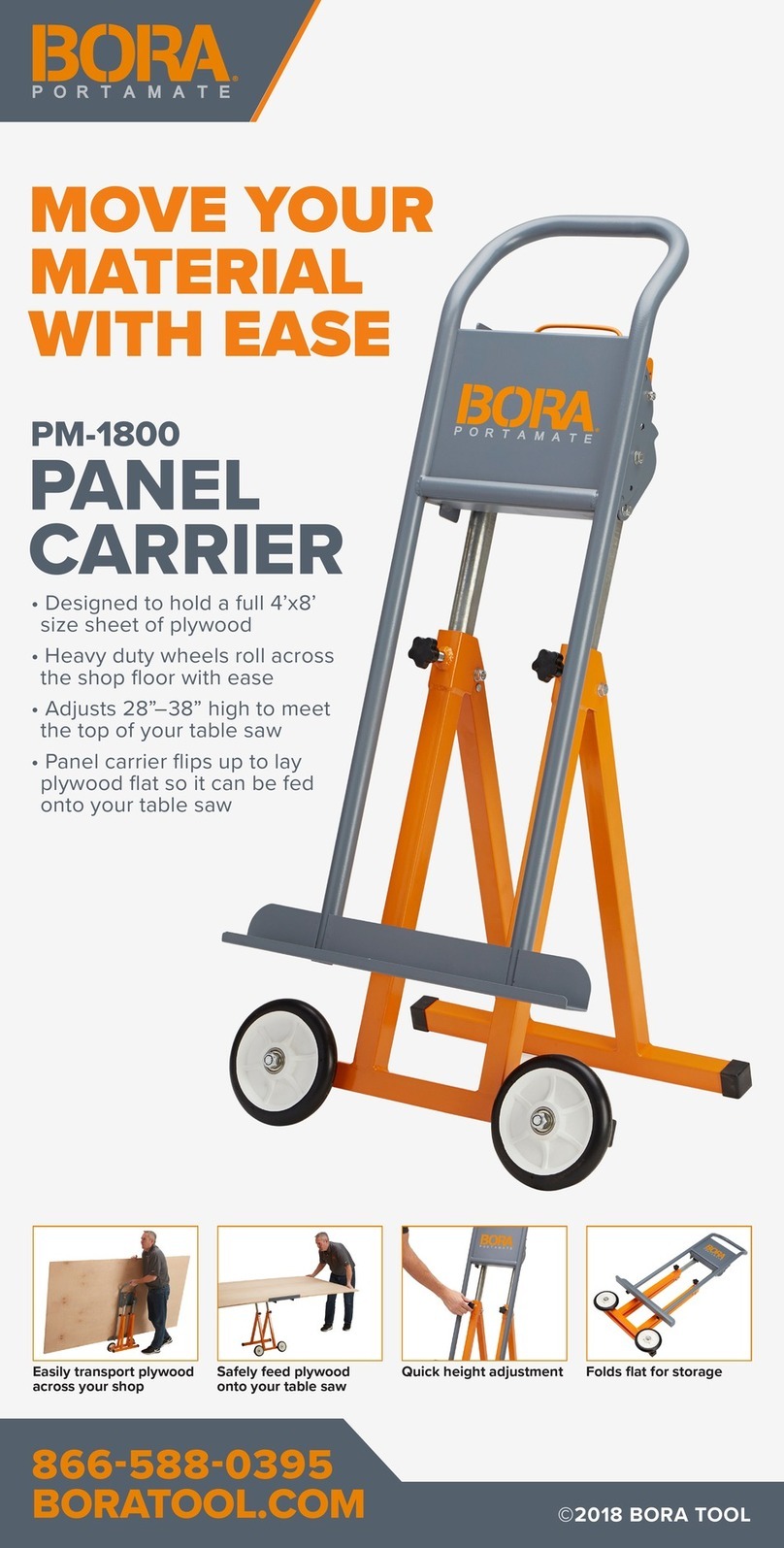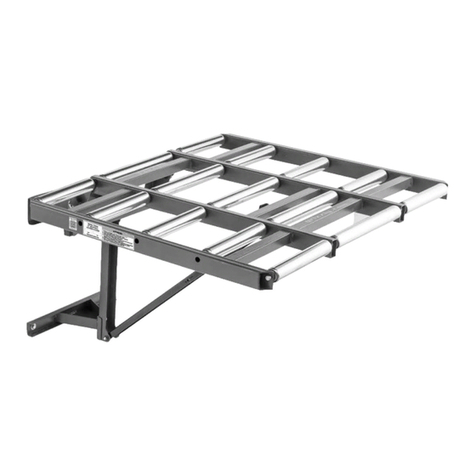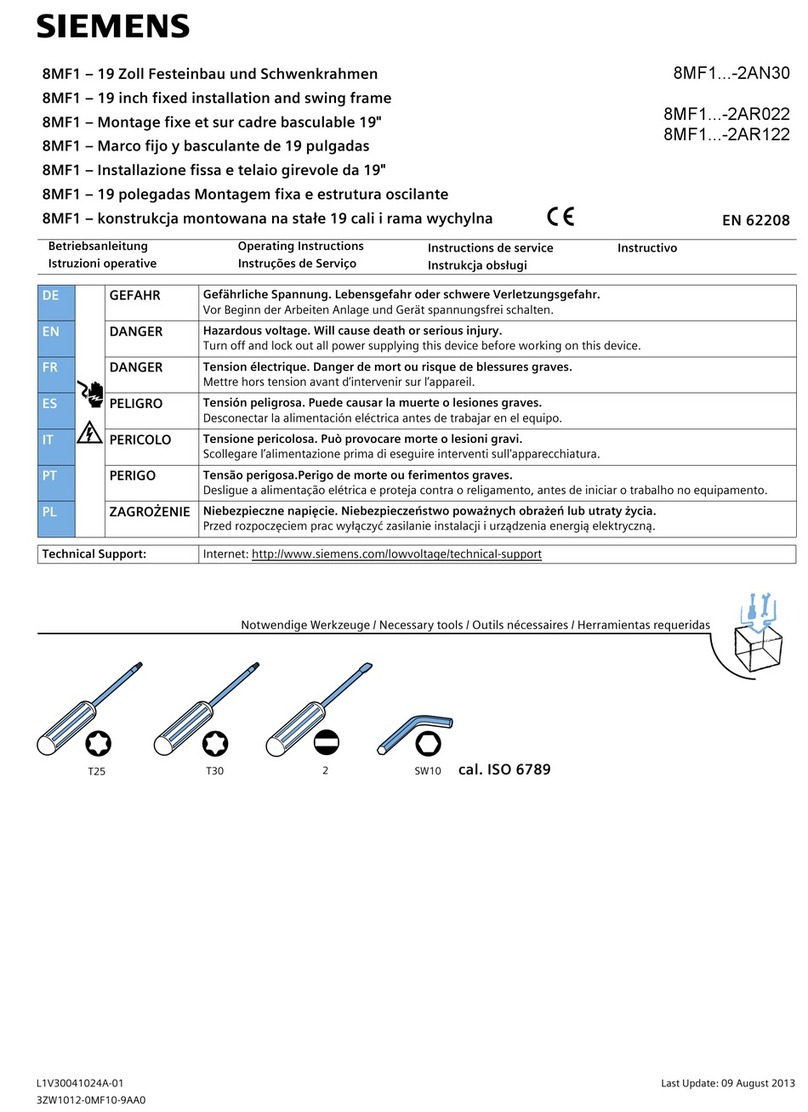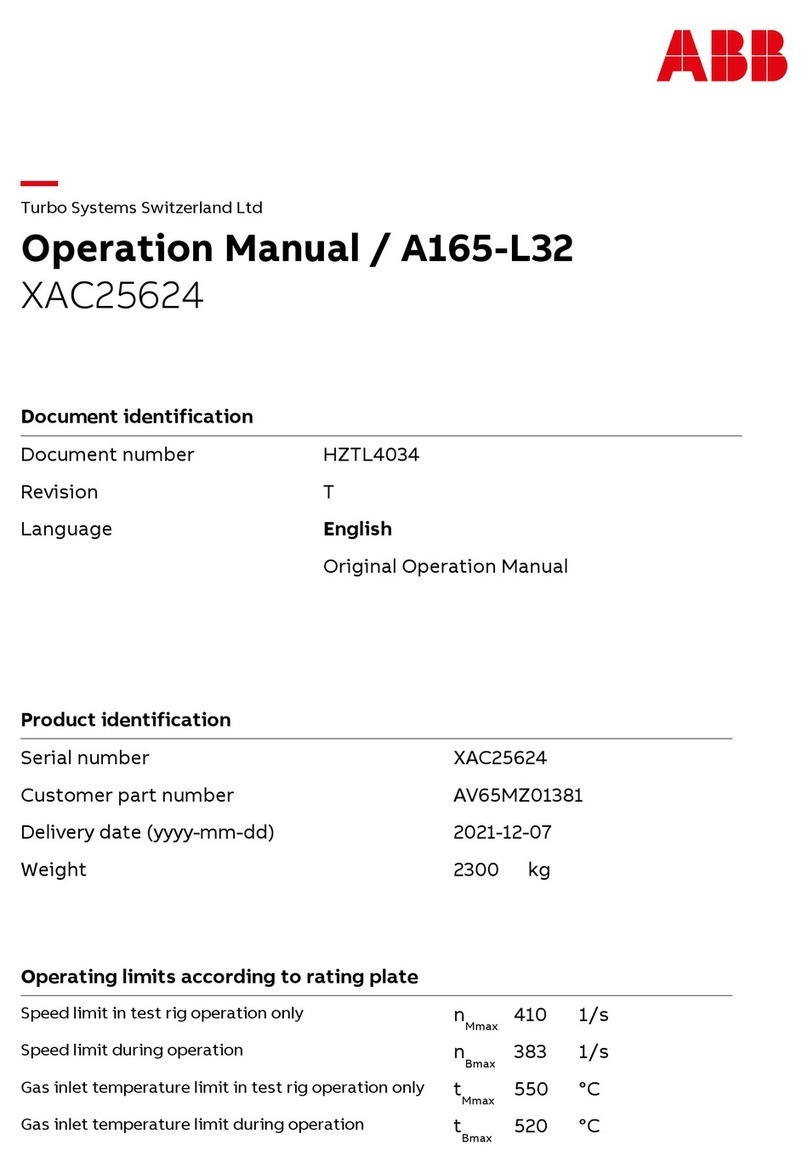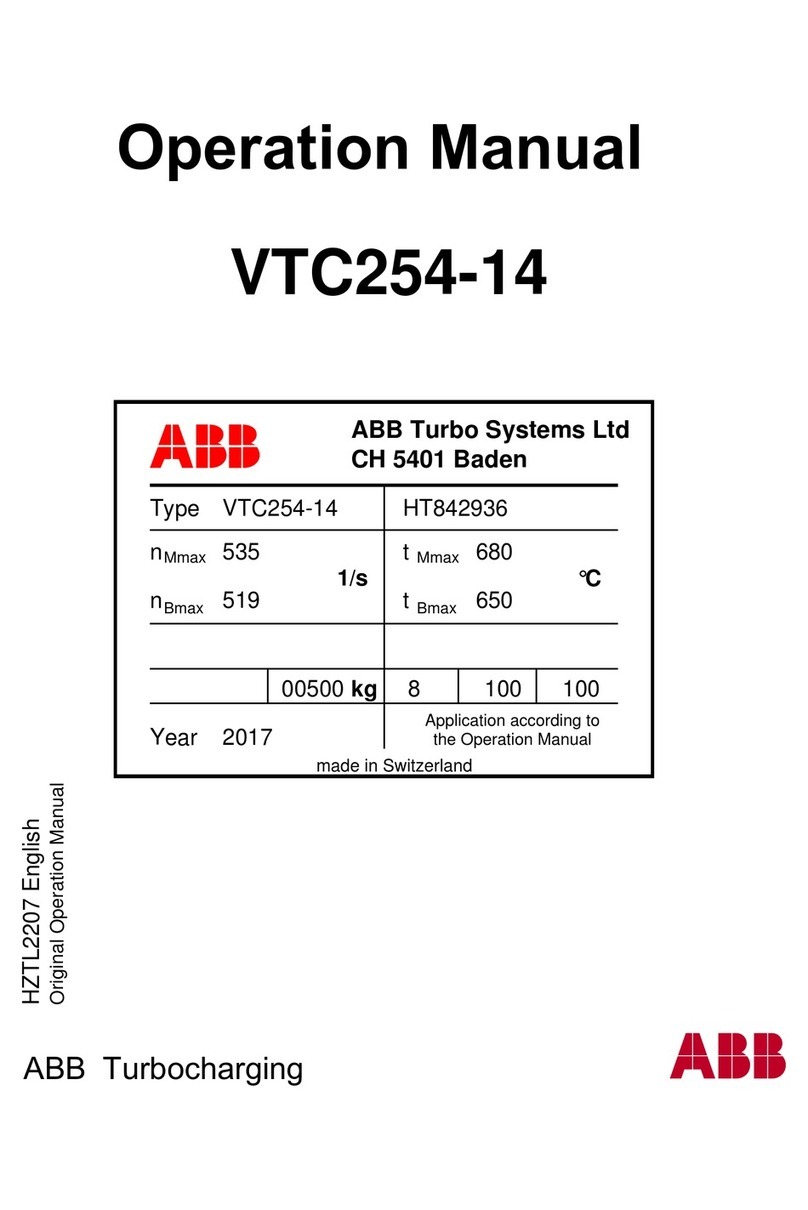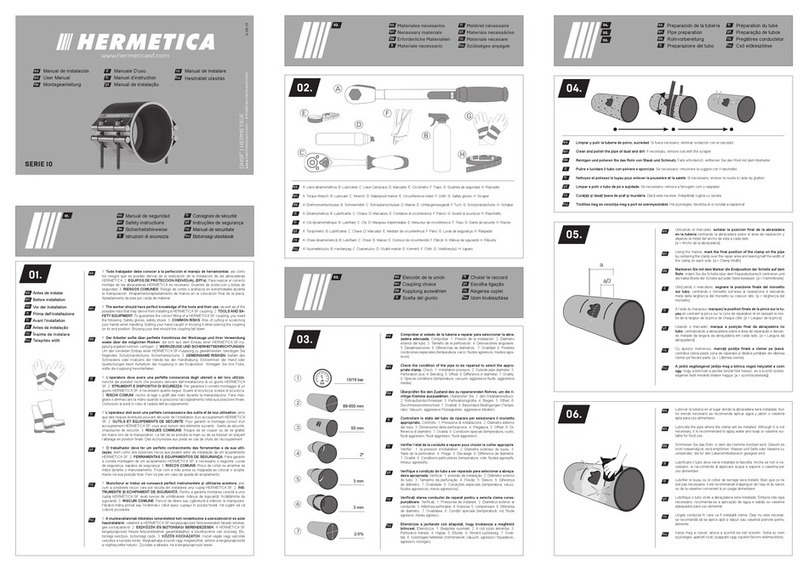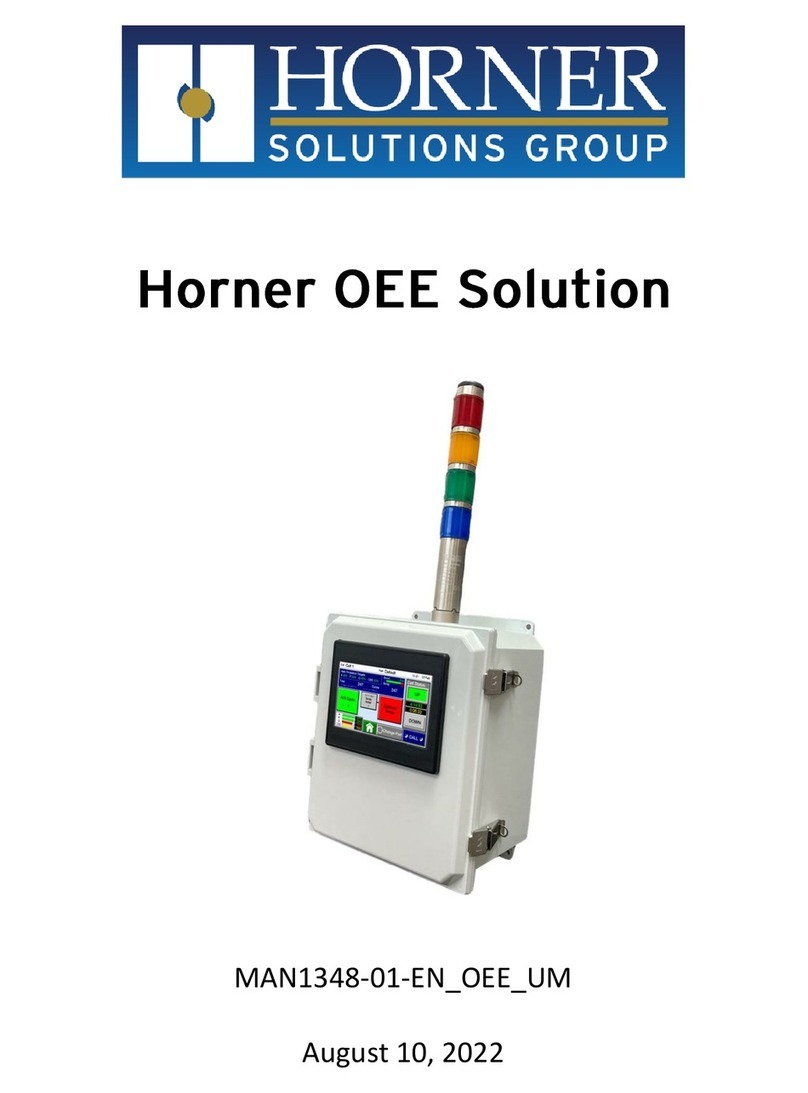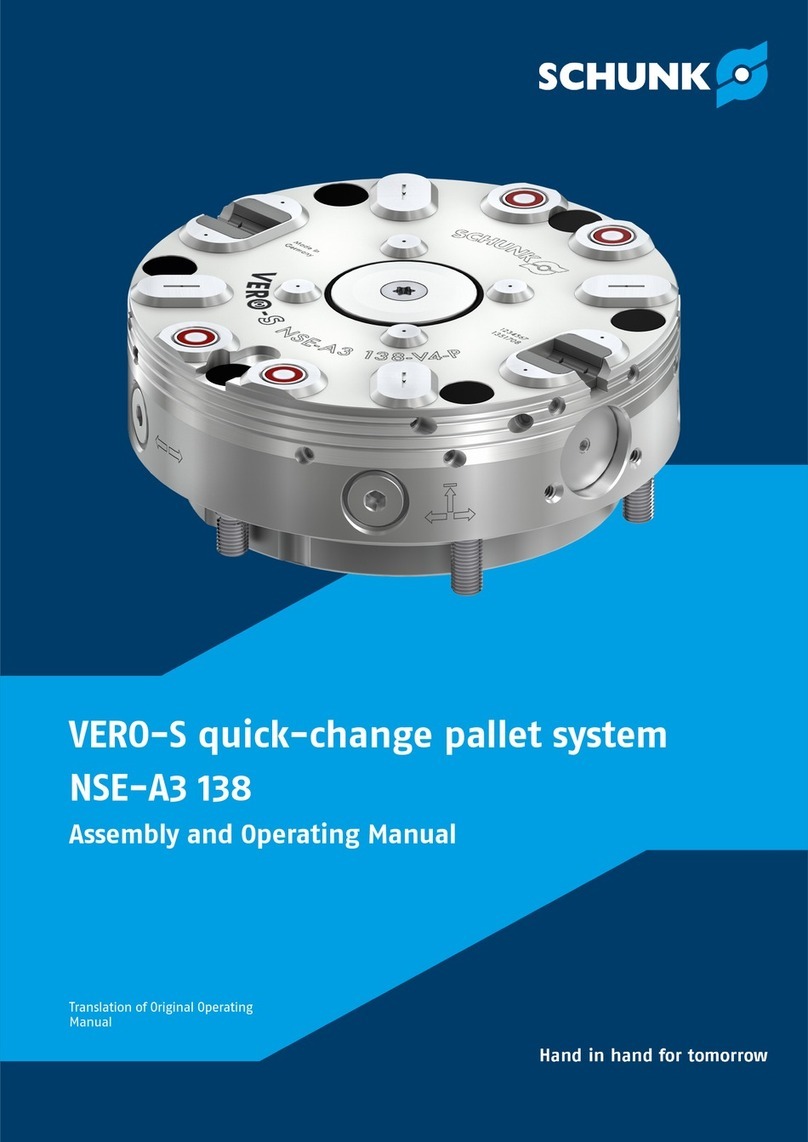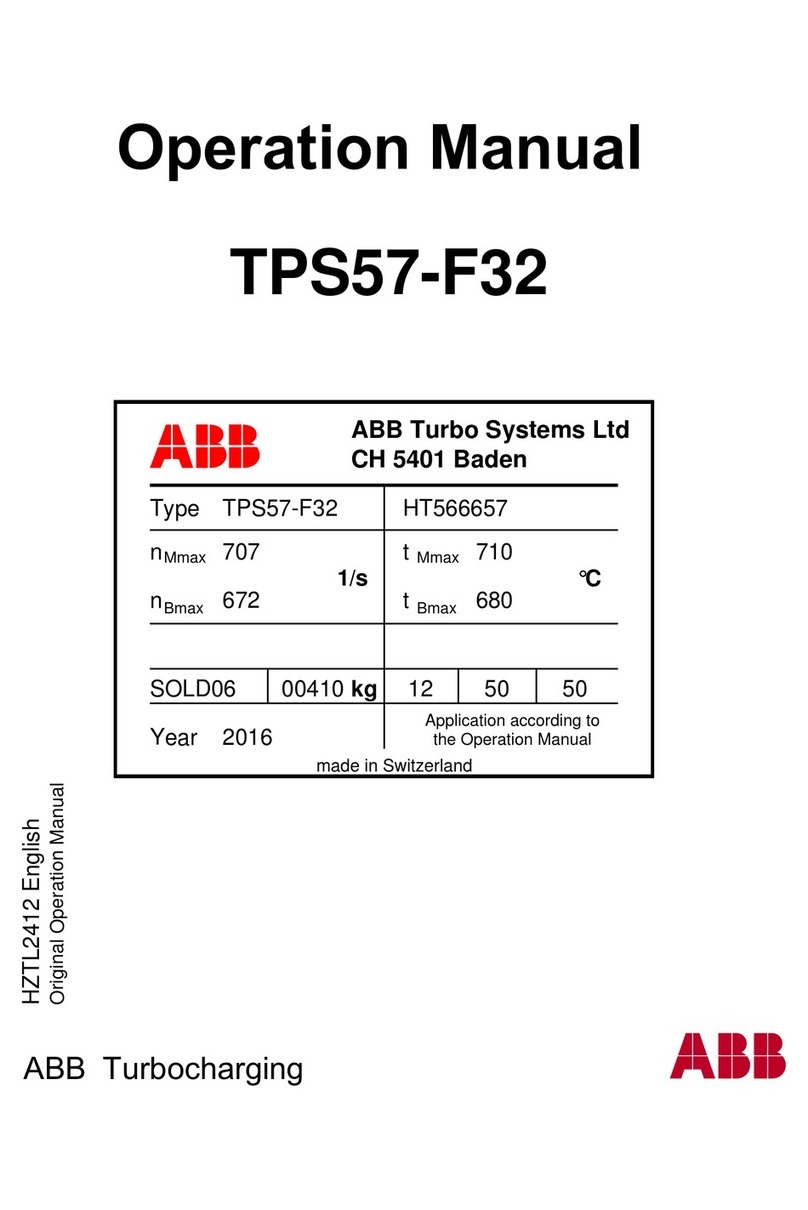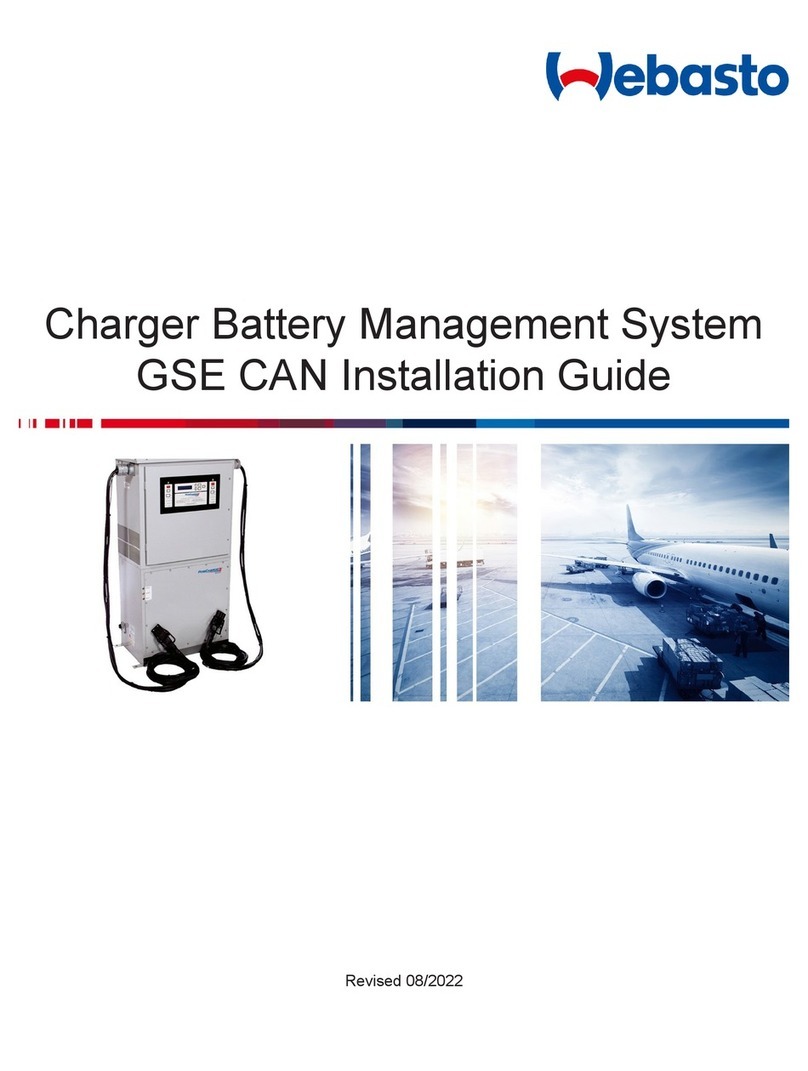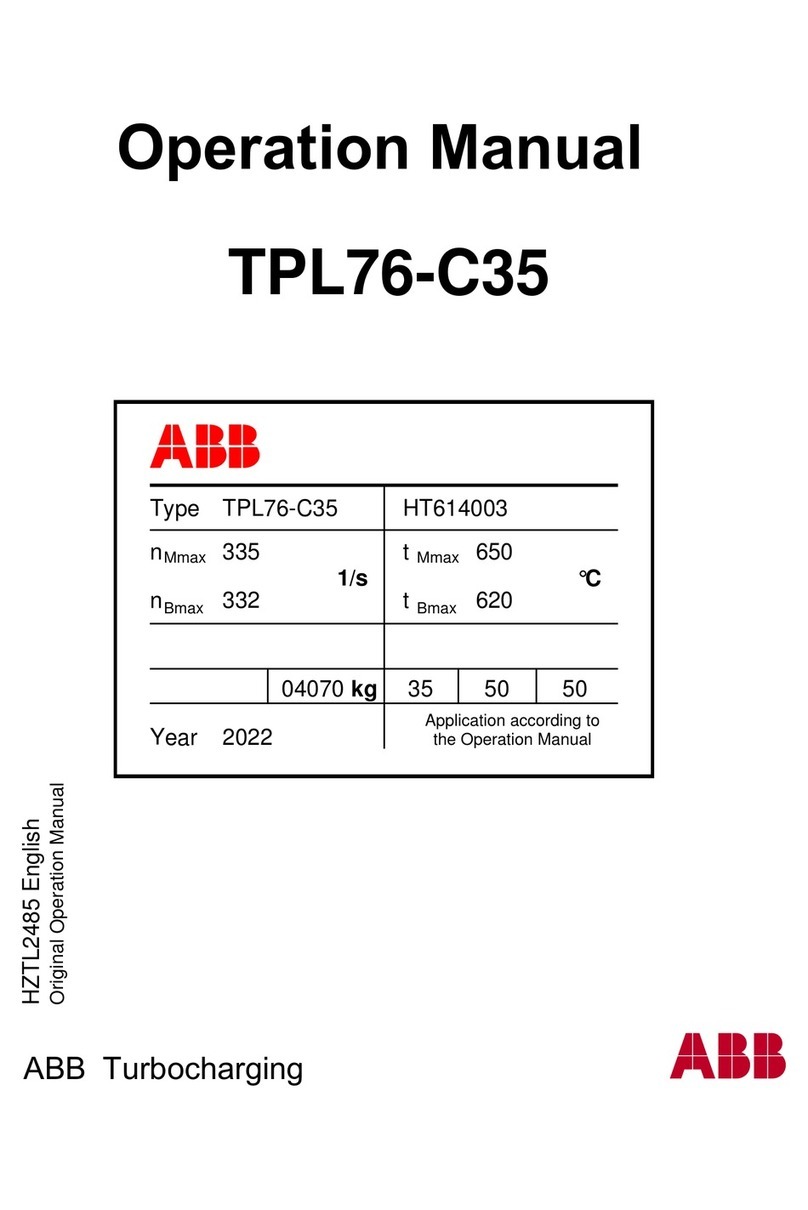3 Installation (continued)
3.5.2 JSXFH
•The valve and pipe assembly are mounted to the tank, see Fig.3.
Note: Tank to be provided by the customer.
Fig.3
•Insert the pipe assembly vertically through the tank and screw it into
the OUT port of the valve. Take care when engaging the pipe assembly
into the valve assembly as incorrect alignment of the pipe assembly
may damage the O-ring inside the valve.
•Once the pipe assembly thread is correctly engaged with the OUT port
thread, continue tightening the pipe assembly until the body and the
bottom support touch the tank.
•Tighten with a wrench or other tool so that the bottom support does not
rotate, see Fig.4.
Fig. 4
Note: Secure the bottom support with a wrench (method ‘a’ or ‘b’ can
be used). When securing, align the tank with the curved
surface of the bottom support.
•Tighten the pipe assembly hexagon nut with a wrench to the specified
tightening torque in the table below.
Caution
•Excessive tightening may damage the valve or deform or damage the
tank.
•It is recommended that the tank beconstructed from ANSI SCH40 pipe
(or pipe of equivalent strength). If a custom tank is to be fabricated
suitably rated material should be used. For recommended tank hole
dimensions and spacing, see Fig.5.
3 Installation (continued)
Fig.5
Dimensions in mm; tolerance +1, 0.
3.6 Electrical connection Warning
3.6.1 Electrical instructions
•Do not connect or disconnect the DIN connector while energised.
•Do not separate the DIN connector in hazardous locations.
•Whenever the DIN connector is disconnected, protection shall be
provided to prevent:
1) dust and/or water from entering the coil or connector and
2) the accumulation of water and/or dust on the DIN connector and
coil mating surfaces.
•See 3.3 regarding internal earthing and external bonding.
3.6.2 Wiring instructions
The electrical connection shall be made using the DIN connector
provided. Use of any other connector renders the SMC Declaration of
Conformity for the 56-JSXF invalid.
DIN connector
(SMC part No. EVS7060-61)
Components:
1. Terminal block
2. Housing with cable gland
3. Mounting screw and sealing washer
Hexagon socket SW2
4. Cable sealing rings
1 pc for cable diameter 4 - 6 mm
1 pc for cable diameter 6 - 8 mm
5. Cable clamping ring
6. Gland nut
7. Gasket
Specifications:
Preparation for wiring the DIN connector:
•Make sure that the sealing ring and gasket do not become damaged
during assembly.
•Select the correct size sealing ring, 4-6 mm or 6-8 mm, for the cable
used. Only one sealing ring to be used per installation.
•Observe the properties of the cable regarding respective requirements
and ambient conditions at the point of wiring (see EN 60079-14).
Prevent the cables and wires from being damaged.
3 Installation (continued)
•The installation shall provide strain relief for the cable close to the
connector to ensure that strain and torsion are not transmitted to the
connector.
•Stranded and fine-stranded conductors with end sleeves or solid
conductors may be used. Only one wire end may be used for each
clamp. Soldering of stranded and fine-stranded wire ends is not
permitted.
•The housing can be orientated about the terminal block in any of the 4
available positions (increments of 90°).
Wiring the connector:
•Remove the housing screw and insert a screwdriver into the slot on the
underside of the DIN cap and carefully remove the block.
•Insert the cable through the gland nut, clamp ring, sealing ring and
housing.
•Loosen the terminal screws on the block and insert the prepared ends
of the conductors. Secure each conductor by tightening the terminal
screw to a torque of 0.2 (+ 0.1) N∙m.
•Locate the terminal block into the housing in the desired orientation.
•Tighten the housing gland nut to secure the cable to a torque of
1.8 (± 0.2) N∙m.
•Mount the DIN connector to the coil ensuring that the gasket provided
is installed correctly. Tighten the mounting screw, with sealing washer,
to a torque of 0.4 (± 0.1) N∙m.
3.7 Electrical circuit
3.8 Residual voltage Caution
The varistor (surge suppressor) arrests the back EMF voltage from the
coil to approximately 60 V. Ensure the transient voltage is within the
specification of the host controller.
3.9 Countermeasure for surge voltage
Caution
Sudden interruption of power supplied to large inductive devices may
cause non-polar type valves in a de-energised state to switch. When
installing a breaker circuit to isolate the power to such devices, consider
installation of a surge absorption diode across the output of the breaker.
3.10 Lubrication Caution
The JSXF Series of valves do not require lubrication for correct operation
and are therefore supplied un-lubricated. Lubricated air should not be
supplied to these valves.
4 How to Order
Refer to 56-JSXF customer drawings.
5 Outline Dimensions
Refer to 56-JSXF customer drawings.
6 Maintenance
Warning
•Before performing maintenance, ensure section 3.6.1 is read and
understood.
•Useonlythe DIN connectorsuppliedwith the product,see replacement
parts (6.4).
6.1 General maintenance Caution
•Not following proper maintenance procedures could cause the product
to malfunction and lead to equipment damage.
•If handled improperly, compressed air can be dangerous.
•Maintenance of pneumatic systems should be performed only by
qualified personnel.
6 Maintenance (continued)
•Before performing maintenance, turn off the power supply and be sure
to cut off the supply pressure. Confirm that the air is released to
atmosphere.
•After installation and maintenance, apply operating pressure and
power to the equipment and perform appropriate functional and
leakage tests to make sure the equipment is installed correctly.
•If any electricalconnections are disturbed during maintenance, ensure
they are reconnected correctly and safety checks are carried out as
required to ensure continued compliance with applicable national
regulations.
•Do not make any modification to the product.
•Do not disassemble the product, unless required by installation or
maintenance instructions.
•Refer to the Disassembly/Assembly procedures in sections 6.2 to 6.3
for the replacement of the main valve and sub valve.
•If a silencer is used for a long period of time, clogging may occur and
the response characteristics may change. Depending on the quality of
the fluid and the energizing time, replace the silencer after 500,000
cycles.
•JSXFE type: Check the tightness of the compression nut periodically
to ensure proper sealing between the valve body and the piping.
•JSXFH type: Vibration due to the discharge of air during operation may
cause loosening of the hexagon nut leading to air leakage. Check the
tightness of the hexagon nut periodically to ensure the correct torque
is applied.
•To maintain a goodconnection between the marked main valve bonnet
hexagon bolt and the ring terminal (see section 3.3.2), the bolt
tightness is to be checked periodically. Refer to section 6.3 for main
valve bolt tightening torques.
•When the valves are used for infrequent operation:
oSwitch valves at least once every 30 days to prevent malfunction.
oTo maintain the product in optimum condition, conduct a regular
inspection every 6 months.
6.2 Disassembly procedure Warning
Do not remove the solenoid coil. Caution
•Before starting the disassembly work, be sure to shut off the power
supply and pressure supply, and then release the residual pressure.
•Loosen the hexagon bolts (and/or cross recessed round head screws)
and remove the bonnet, O-ring, and main valve (and/or sub-valve).
See Fig.6.
